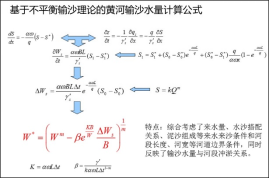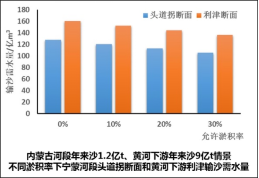On June 3, the IWHR held an achievement acceptance meeting in
Beijing for the project "Study on Water Volume for Sediment Transport and
Channel Shaping in Different Reaches of the Yellow River", a project
funded by IWHR's basic scientific research fund. The project was led by Professors
CHEN Jianguo (from IRTCES) and WANG Chonghao (from the Sediment Research
Institute). The expert panel consisted of 6 members, including Professor CAO
Wenhong (Chief Engineer of IWHR); Mr. RUAN Benqing (former Deputy Chief
Engineer); Mr. ZHU Xingming; Mr. YANG Xiaoqing; Mr. LIU Yingfei (Deputy
Director of the Research Planning Department), and Ms. CHEN Jing (Section Chief
of the Finance Department).
After reviewing project materials, listening to the achievement
report, and conducting expert inquiries, the panel unanimously agreed that the
project had fully completed all research contents specified in the task
statement, met the required technical and economic indicators, and the use of
funds was basically reasonable. Thus, the project was approved for acceptance
with an overall evaluation of "A".
Project
Overview
- Implementation Period: January 2017 – December 2020
- Research Focus: Key scientific and technological issues in the
ecological protection and high-quality development of the Yellow River
Basin.
- Research Methods: Comprehensive approaches including on-site
surveys, analysis of measured data, theoretical analysis, and mathematical model
calculations.
- Key Study Areas: Ningxia-Inner Mongolia reach and the lower Yellow
River.
The project systematically studied the water-sediment relationship
and bed evolution in the river channel, the scale of the medium-sized river
channel and its influencing mechanisms, as well as water volume for sediment
transport and channel shaping. The key achievements include:
1. Revealed the characteristics of water-sediment variation in
different reaches of the Yellow River and proposed characterization parameters
for such variation.
2. Established a calculation method for water volume for sediment
transport in the Yellow River based on the theory of unequilibrium sediment
transport, and obtained the flood-season water volume for sediment transport
for different reaches.
3. Analyzed the demand for river channel scale during flood season
water-sediment transport and winter ice flood prevention, and proposed
appropriate scales for medium-sized river channels in different reaches.
4. Through numerical simulations, revealed the impact of changes in
water-sediment variation on the medium-sized river channels in the
Ningxia-Inner Mongolia reach and the lower Yellow River.
The achievements can provide technical support for the efficient
utilization of Yellow River water resources, pre-feasibility studies for
subsequent South-to-North Water Diversion projects, comprehensive management of
the Ningxia-Inner Mongolia reach and the lower Yellow River, and optimal
regulation of water and sediment in key reservoirs on the main and tributary
streams of the Yellow River.



